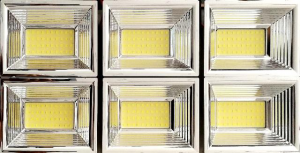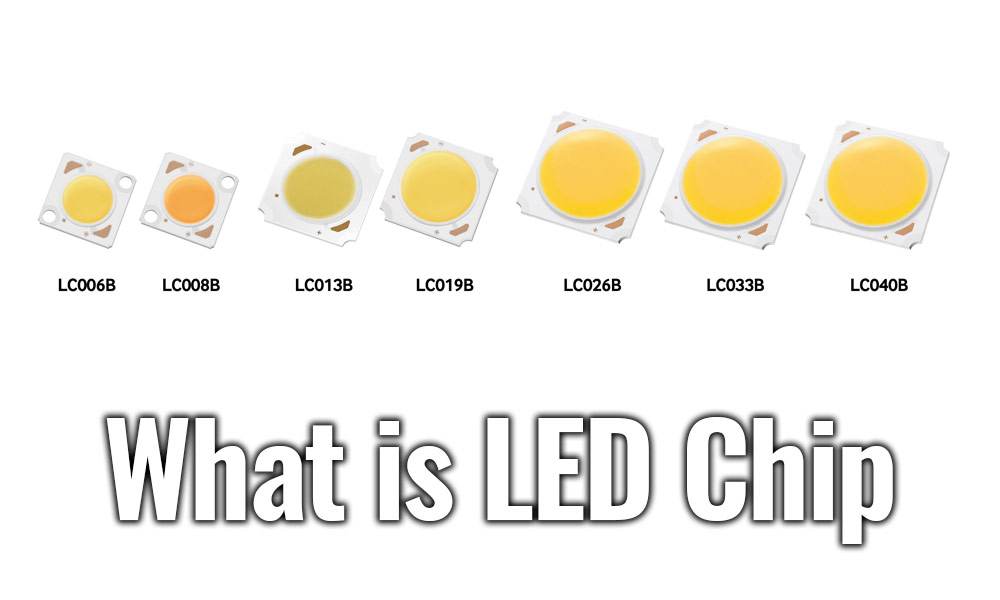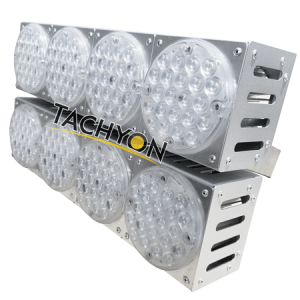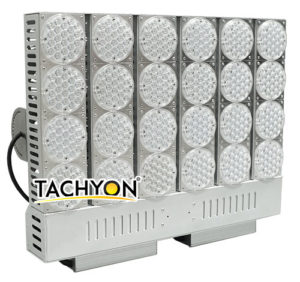Primary Color (Basic Color)
Primary colors are the basic colors used to mix other colors. The primary colors have the highest color purity, the purest and the most vivid. Most colors can be blended, but other colors cannot be blended into three primary colors.
“Primary color” is not a physical concept, but a biological concept based on the physiological effect of the human eye on light. From the perspective of human visual physiology, there are three color-sensing cone cells in the retina of the human eye-red cells, green cells, and blue cells. These three cells are sensitive to red light, green light, and blue light. When one of the color-sensing cells is strongly stimulated, it will cause the color-sensing cells to excite and produce the color sensation. The three color-sensing cells of the human eye have the ability to combine colors.
When a polychromatic light stimulates the human eye, the color-sensing cells of the human eye can decompose it into three monochromatic lights of red, green, and blue, and then mix them into one color. It is precisely because of this ability to combine colors that we can recognize a wider range of colors in addition to red, green, and blue.
There are three basic shades in color light, and their colors are red, green and blue. These three color lights are not only the main color lights obtained after the decomposition of white light, but also the main components of the mixed color lights, and can match the spectral response interval of the human eye’s retinal cells, which conforms to the visual physiological effect of the human eye. These three colors are mixed in different proportions, almost all colors in nature can be obtained, and the mixed color gamut is the largest; and these three colors are independent, and one of the primary colors cannot be mixed by other primary colors. Therefore, Red, green, and blue are called the three primary colors of shade.
For a unified understanding, the International Commission on Illumination (CIE) in 1931 stipulated the wavelength of the three primary colors λ(R)=700.0nm, λ(G)=546.1nm, λ(B)=435.8nm. In chromatic research, in order to facilitate qualitative analysis, white light is often regarded as a synthesis of the three primary colors of red, green, and blue. The three primary colors are usually divided into two categories, one is the three primary colors of shade and the other is the three primary colors of pigments. The color of a pigment refers to the wavelength it reflects under daylight (the wavelength that is not reflected is absorbed); the mixed color of several pigments is the light reflected by each component; the pigments of different colors can be magenta, yellow, and cyan. The three primary colors are mixed in different proportions.
There are two kinds of “three originals”, one is emitted light, and the mixed light is additive color mixing; the other is to absorb part of the reflected light after irradiating the white light wavelength, and the mixed color is the common reflected light after irradiating the white light.
Second, the three primary colors of color light–the principle of additive color
When the three primary colors are added at different intensities, the total light intensity is enhanced and any color can be obtained. The relationship between a certain color and these 3 colors can be described by the following formula: color = R (the percentage of red) + G (the percentage of green) + B (the percentage of blue). When the three primary colors are added in equal amounts, white is obtained; when equal amounts of red and green are added and blue is 0, yellow is obtained; when equal amounts of red and blue are added and green is 0, magenta is obtained; equal amounts of green and blue are obtained When red is 0, cyan is obtained.
The size of the three primary colors determines the brightness of the colored light, and the brightness of the mixed color is equal to the sum of the brightness of each primary color component. The ratio of the three primary colors determines the hue of the mixed color. When the mixing ratio of the three primary colors is the same, it is gray. This is the principle of additive color, which is widely used in products that actively emit light such as televisions and monitors.
Three, the three primary colors of pigments–the principle of subtractive color method
The subtractive color mixing takes advantage of the filter characteristics, that is, the unwanted color in white light, leaving the desired color. Such as subtractive color mixing used in printing and dyeing and pigments. The subtractive color mixing relationship is as follows: yellow = white-blue, cyan = white-red, red = white-blue-green, black = white-blue-green-red. When two or more color materials are mixed and overlapped, the white light must be subtracted from the absorption light of the various color materials, and the result of the mixture of the remaining part of the reflected color is the color produced by the mixing or overlapping of the color materials.
The yellow color is yellow because it sucks The blue light reflects the yellow light. The reason why the cyan color is cyan is because it absorbs the red light and reflects the cyan light. If you mix yellow and blue pigments, they actually absorb blue and red light at the same time, and only green light can reflect the rest, so it appears green. In printing, printing, painting, painting and other occasions that rely on the reflection of the surface of the medium to passively emit light, the color of the object is the remaining part of the light source after being absorbed by the pigment, so the principle of its color formation is called the principle of subtractive color.
The principle of subtractive color method is widely used in various passive lighting occasions. The three primary color pigments in the principle of subtractive method are Cyan, Magenta and Yellow.
Definition of light source related to LED
Whether LED arrays, LED modules or LED lights, they are all light sources.
(1) Lamp: a light source made to generate light radiation (usually visible). Note: This term is sometimes used for certain types of luminaires.
(2) Light Emitting Diode (LED): A p-n junction semiconductor device that emits incoherent light radiation when forward biased. The emitted spectrum may be in the ultraviolet, visible or infrared wavelength region.
(3) LED chip (LED die): A small piece of light-emitting semiconductor material assembled on a given functional LED circuit.
(4) LED array or module: LED package (component) or chip assembly on a printed circuit board or substrate, possibly with optical components, additional thermal, mechanical and intended to connect to the LED driver load Side electrical interface. The device does not contain a power supply and standard lamp holders. The device cannot be directly connected to the branch circuit.
(5) LED package: A component of one or more LED chips including wire bonding or other types of electrical connections, which may have optical components, thermal, mechanical, and electrical interfaces. The device does not include power supply and standard lamp holder. The device cannot be directly connected to the branch circuit.
(6) LED driver: a device containing a power supply and an LED control circuit, the purpose is to make the LED package (component), or LED array (module) or LED lamp work.
(7) LED lamp (non-integrated): a component containing an LED array (module) or LED package (component) and a standard lamp holder. The device intends to connect to the LED driver of the luminaire through a standard lamp holder. The device cannot be directly connected to the branch circuit.
(8) LED lamp (integrated): an integrated combination of LED package (component) or LED array (module), LED driver, standard lamp holder, and other photometric, thermal, mechanical and electrical components. The device intends to connect directly to the branch circuit through a standardized lamp holder.
(9) LED light engine (LED light Engine): including the overall combination of LED package (component) or LED array (module), LED driver, and other photometric, thermal, mechanical and electrical components. The device should be directly connected to the branch circuit through a conventional connector that matches the LED lamp, which is designed to not use a standard lamp holder.
Definition of lamps and LED lamps
(1) The definition of luminaire (luminaire) given in GB 7000.1-2007 is “a device that can distribute, transmit or transform one or more lamps to emit light, and includes all parts necessary to support, fix and protect the lamp (but Excluding the lamp itself), as well as the necessary circuit auxiliary devices and the devices that connect them to the power supply.” There is also a note in the definition, that is, “A luminaire with an integral, non-replaceable light source is regarded as a luminaire, but it does not correspond to the integral type. Light source and integral self-ballasted lamps are tested.”
(2) The definition of LED luminaire in “ANSI/IESNA RP-16-05 Lighting Engineering Nomenclature and Definition” includes LED-based light-emitting elements and matching drivers, as well as light distribution components, fixed and protective lighting Components of components and complete lighting fixtures that connect the fixture to the branch circuit components. The possible forms of LED-based light-emitting components are LED packages (components), LED arrays (modules), LED light engines, or LED lights. The LED luminaire is intended to be directly connected to the branch circuit.
(3) Hybrid LED luminaire: A luminaire equipped with LED-based light-emitting elements and other types of light sources such as incandescent or fluorescent lamps.
How to define LED lamps and LED light sources
The definition of lamps and LED lamps gives the following important information:
- The definition of GB 7000.1-2007 gives the structural characteristics of the lamp. The lamp has parts that control the light emitted by the lamp, as well as the parts that provide the mechanical support parts of the lamp, the lighting circuit and the power connection parts, and the protection of the lamp. Light control components (reflectors, light-transmitting prisms or flat glass, grids, etc.), lamp holders supporting lamps, lamp control devices, capacitors, starters and their circuits and other necessary auxiliary devices, and machinery that fixes these components The structure or device, the power connection method (the power connection method specified in Article 5.1 of GB7000.1), and the necessary enclosure protection measures to protect the lamp, etc.
- When non-replaceable lamps or LED lamps are used, the luminaires with structural characteristics of lamps will not be changed accordingly. In this case, the “Note” defined in GB 7000.1-2007 emphasizes that the integral type is not replaceable The illuminator of the light source is regarded as a luminaire, but the integral light source and integral self-ballasted lamp are not tested.
- Traditional light sources are characterized by standard lamp caps, while LED light sources have various forms. In order to be identified, the definition of LED lamps provided by ANSI/IESNA RP-16-05 identifies the form of light sources in LED lamps, that is, the light source can be It is an LED array (LED array), LED module (LED module) or LED lamp (LED lamp).
- ANSI/IESNA RP-16-05 defines the key difference between LED lamps and LED lamps, that is, the LED lamps are intended to be directly connected to the branch circuit, and the LED light source is not directly connected to the branch circuit. Among them:
-The LED module does not contain a power source and cannot be directly connected to the branch circuit,
-The LED array does not include a power supply, nor a standard lamp holder, and cannot be directly connected to the branch circuit,
-Integral LED lights need to pass through the standard lamp holder, and non-integral LED lights need to pass through the lamp holder in the luminaire to connect to the branch circuit.
- In the related terminology of LED, the difference between LED driver, LED control circuit and LED power supply should also be clarified: -LED driver refers to a device containing LED control circuit and LED power supply,
-LED power supply refers to a transformer, power supply (modulation), battery or other device that has no control function but can provide the required current, voltage and power within its design limits,
-LED control circuit does not contain a power supply and is designed for Electronic components that adjust the output voltage, current, or duty cycle to convert or otherwise control the amount and characteristics of electrical energy provided to the LED package (component) or LED array (module). According to these concepts, it can be understood that the LED power supply and LED control circuit required for LED work can be separated and exist independently, or can be combined together.
When the LED power supply and LED control circuit are combined together, it is the LED driver.
- Integral LED lights and non-integral LED lights have standard lamp caps and have similar appearance characteristics. The key difference between them is whether they have an LED driver. Integral LED lamps are LED modules or arrays with LED drivers, which can be connected to branch circuits through standardized lamp holders. Integral LED lamps can replace incandescent lamps or CFL lamps for general lighting.

A non-integral LED lamp is an LED module or array without an LED driver. It needs to be connected to the branch circuit through the lamp holder in the lamp. This lamp should contain the LED driver required for the operation of the non-integral LED lamp. Non-integral LEDs cannot directly replace incandescent lamps or CFL lamps.
- The LED light engine is a device between LED lamps and LED lamps. The difference from LED lamps is that it does not contain a standard lamp holder, but contains a connector that matches the lamp. The difference with the LED lamp is that it cannot be directly connected to the branch circuit. The same point as the lamp is that it can have a set light distribution function, such as a unique road lamp light distribution. The LED light engine enables maintainability of LED lamps that use LED light sources without standard lamp heads.





